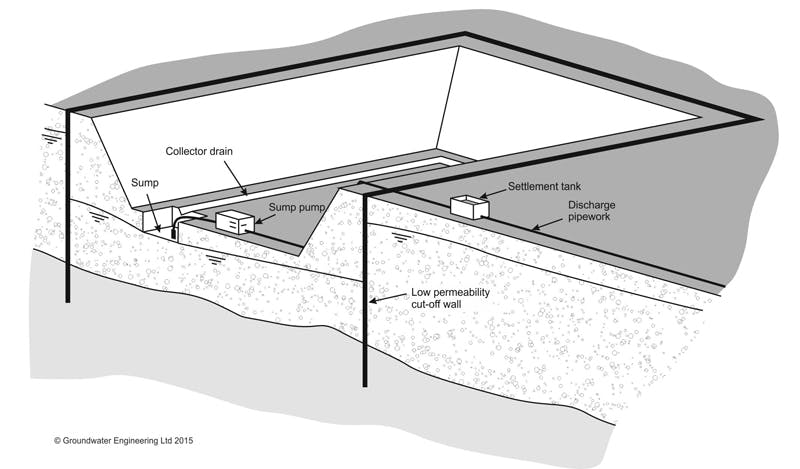Cut Off Walls

Cut-off walls are used to exclude groundwater from an excavation, to minimise the requirement for dewatering pumping. Typically, the method involves installing a very low permeability physical cut-off wall or barrier around the perimeter of the excavation to prevent groundwater from entering the working area. Most commonly, the cut-off is vertical and ideally penetrates down to a very low permeability stratum (such as a clay or unfractured bedrock) that forms a basal seal for the excavation.
Several methods are available to form cut-off walls or barriers around excavations, including:
- Steel sheet-piling
- Slurry trench walls
- Concrete diaphragm walls
- Bored pile walls
- Grout barriers
- Mix-in-place barriers
- Artificial ground freezing
The selection of a given exclusion method used to form a cut-off barrier will depend on the conditions and constraints on a given project. Primary constraints are desired depth of wall, ground conditions, geometry of wall (some methods can be used horizontally or inclined to the vertical, while others are limited to vertical applications), and whether the barrier is intended to be permanent or temporary.
Groundwater Engineering’s team has decades of experience in groundwater control projects around the world, and we provide a complete design and installation service to control your groundwater problems.
Blog
Dewatering for Basement Construction
12 March 2016Groundwater can be a significant problem when excavating for basement construction. This blog discusses the available techniques that can be used to dewater during basement construction.
Read More




